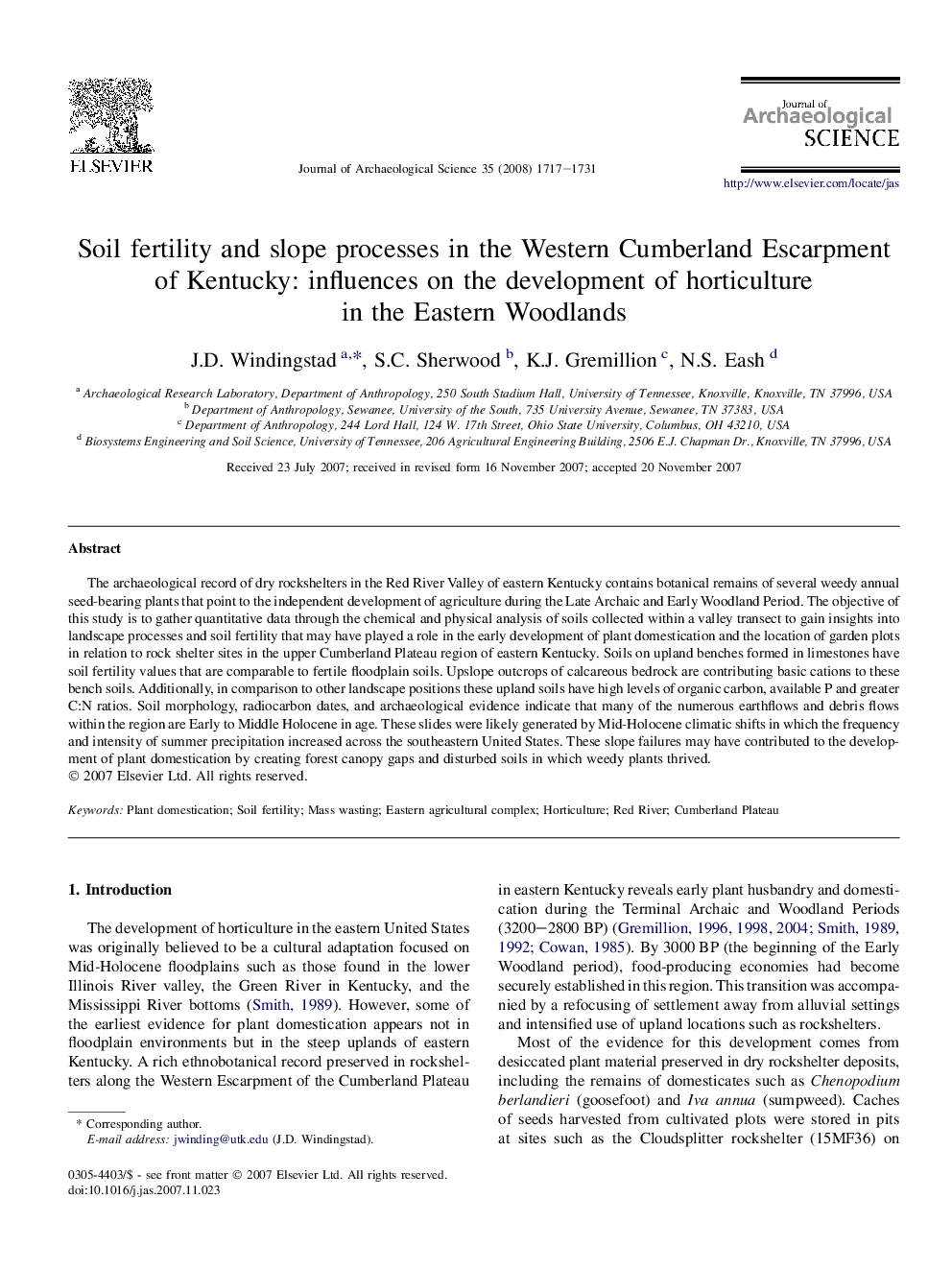| کد مقاله | کد نشریه | سال انتشار | مقاله انگلیسی | نسخه تمام متن |
|---|---|---|---|---|
| 1037493 | 943929 | 2008 | 15 صفحه PDF | دانلود رایگان |

The archaeological record of dry rockshelters in the Red River Valley of eastern Kentucky contains botanical remains of several weedy annual seed-bearing plants that point to the independent development of agriculture during the Late Archaic and Early Woodland Period. The objective of this study is to gather quantitative data through the chemical and physical analysis of soils collected within a valley transect to gain insights into landscape processes and soil fertility that may have played a role in the early development of plant domestication and the location of garden plots in relation to rock shelter sites in the upper Cumberland Plateau region of eastern Kentucky. Soils on upland benches formed in limestones have soil fertility values that are comparable to fertile floodplain soils. Upslope outcrops of calcareous bedrock are contributing basic cations to these bench soils. Additionally, in comparison to other landscape positions these upland soils have high levels of organic carbon, available P and greater C:N ratios. Soil morphology, radiocarbon dates, and archaeological evidence indicate that many of the numerous earthflows and debris flows within the region are Early to Middle Holocene in age. These slides were likely generated by Mid-Holocene climatic shifts in which the frequency and intensity of summer precipitation increased across the southeastern United States. These slope failures may have contributed to the development of plant domestication by creating forest canopy gaps and disturbed soils in which weedy plants thrived.
Journal: Journal of Archaeological Science - Volume 35, Issue 6, June 2008, Pages 1717–1731